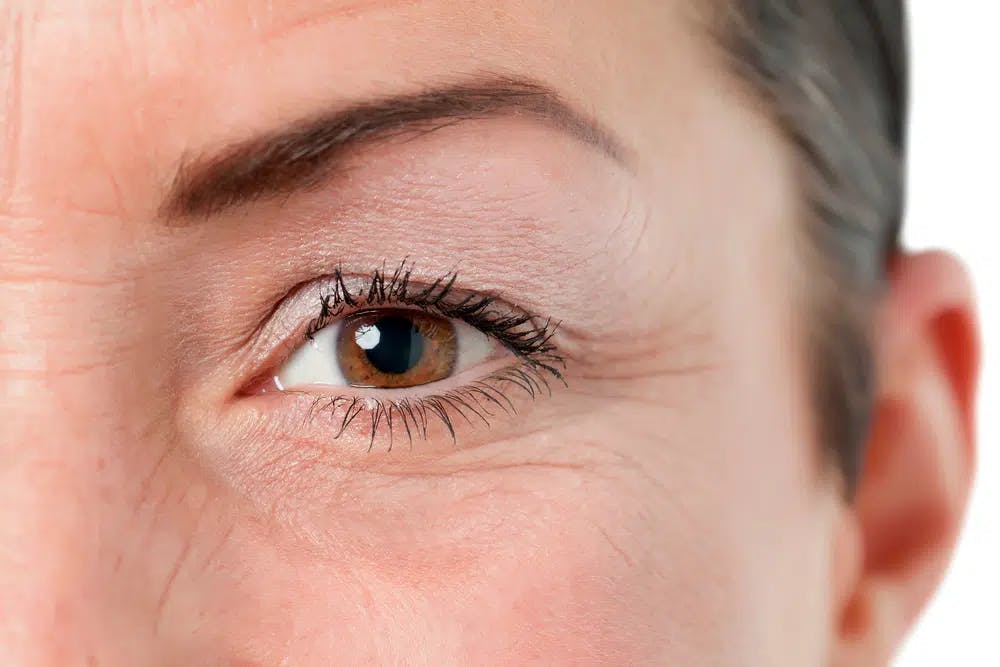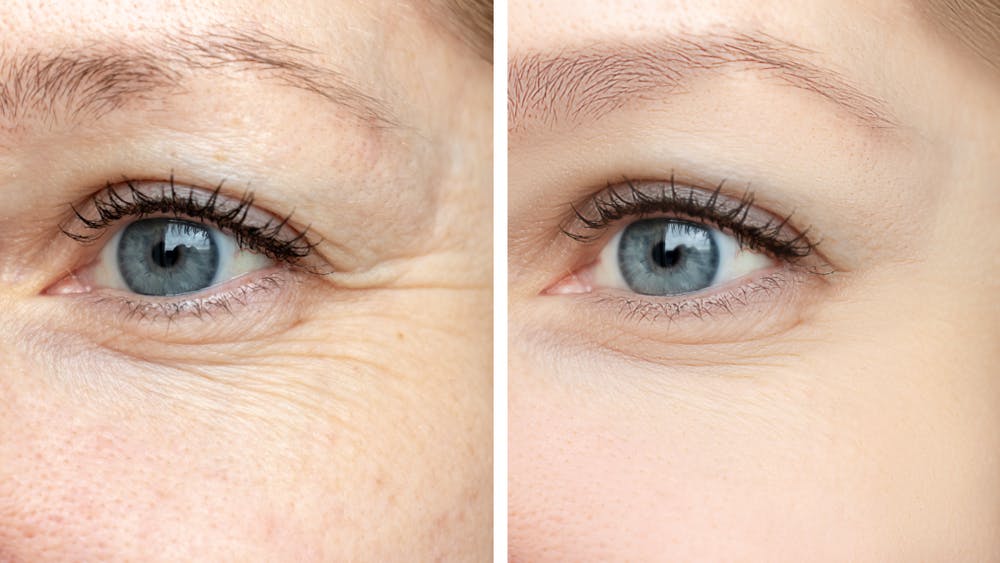
Have you ever wondered about the realities attached to recovering from an eyelid surgery? This article will shed light on that, breaking down the intricacies involved in procedures such as eyelid lift and brow lift, pain management, scarring, post-operative care, and more. We’ll also explore important aspects like ideal candidates for the procedure, the expected procedure’s outcomes, and potential risks and challenges to prepare you for your journey.
Understanding Eyelid Surgery – A Detailed Overview
Eyelid surgery, also known as an Eyelid Lift, aims to improve the appearance of the upper eyelids and reduce the signs of aging or physical distress. This procedure is conducted by making precise incisions to remove excess skin or lift redundant skin.
With a primary focus on the upper eyelid, upper eyelid surgery is often considered a form of Cosmetic eyelid surgery because it brings a rejuvenated appearance to the surrounding area of your eyes, giving you a more rested and alert look.
However, not everyone can be a candidate for eyelid surgery. An ideal candidate is typically someone who has healthy facial tissues and muscles, doesn’t smoke, doesn’t have any serious eye conditions, and has realistic expectations about the outcome of the surgery. Even though it is a commonly performed procedure, understanding eyelid surgery and assessing whether you are a suitable candidate is essential before deciding to go ahead with the operation.
The Rationale Behind Eyelid Surgery
People opt for eyelid surgery for a variety of reasons. For some, it’s to restore a youthful appearance through the removal of loose skin and rectification of droopy eyelids. Enhancing appearance is one of the primary cosmetic reasons for eyelid surgery.
However, it’s not all about appearance. As we age, skin elasticity declines and can cause the eyelids to droop. This can affect the field of vision. Thus, improving vision is another significant reason for the procedure.
Furthermore, eyelid surgery can also help manage certain eye diseases that are worsened by loose skin around the eye area.
Managing Pain Post-operation
Managing post-operative pain is vital to recovery. Your surgeon will typically prescribe pain medications to help. Usage should be as recommended, and any side effects immediately reported.
Non-medication treatments offer additional relief. Applying a cold compress can decrease swelling and numb the painful area.
Partake in gentle exercise once cleared by the surgeon. Movement can reduce pain and speed recovery. Remember, to manage post-operative pain effectively, follow your surgeon’s advice closely.
The Role of Scarring in Eyelid Surgery
Scarring is an inevitable aspect of eyelid surgery, but its aesthetic impact can be managed and reduced effectively. Careful surgical techniques often result in less noticeable scars after eyelid surgery. For instance, incisions are made in the eyelid crease or behind the eyelid, minimizing visible scarring. Over time, scarring becomes less apparent due to the thinness and flexibility of eyelid skin.
Strategic post-operative care, including applying prescribed ointments and avoiding sun exposure, can help to reduce scarring even further. Despite the greatest precautions, some degrees of scarring are unavoidable. However, these scars often fade and become less noticeable with time, adding to the success of the aesthetic outcome of the eyelid surgery.
Eyelid Surgery – Expectations and Ultimate Reality
Eyelid surgery promises a refreshed, youthful look, but expecting instant perfection is unrealistic. Blurry vision initially post-surgery is common, requiring time to clear. Bruising and swelling usually fade within one to two weeks, but full healing takes several weeks, often impacting daily activities for a couple of weeks. Expect temporary blurry vision and arrange for post-op assistance, recognizing that managing expectations is vital for a successful outcome.
The Potential Risks and Challenges Associated With Eyelid Surgery
Eyelid surgery, like any procedure, carries potential risks. Infection risk post-surgery is minimized by maintaining sterile conditions during the procedure and following proper aftercare. Temporary blurred vision is common but typically resolves as the eye adjusts. Other risks include anesthesia reactions, bleeding, and potential healing issues affecting the results. Discussing these risks with your surgeon aids in preparation for potential challenges, ensuring better post-recovery satisfaction. Choose a transparent surgeon who openly discusses potential outcomes and challenges.
Road to Recovery – What to Expect After Eyelid Surgery
In the weeks after eyelid surgery, you can anticipate a tailored recovery period. Your surgeon will provide specific guidelines on what activities are feasible. Severe physical activities and strenuous activities are usually avoided for several weeks after surgery. Light activity, however, is acceptable and often encouraged.
During the initial recovery time, it’s common to experience temporary light sensitivity. It’s crucial to shield your eyes from bright light. Newly operated eyes are sensitive, so limiting exposure during the first few weeks after blepharoplasty is advisable.
As time progresses, the recovery period becomes less taxing. You’ll likely see gradual improvements each week. Following all your surgeon’s instructions and guidelines is vital in getting back to your normal routine as quickly as possible. Soon enough, you will embrace your rejuvenated look.
Remember, every patient’s healing timeline is different. Carefully listening to your body facilitates a healthy and smooth recovery from eyelid surgeries.

Post-Operative Care Essentials
Postoperative care plays an essential role in the recovery process of blepharoplasty surgery. Days after surgery, it is important to keep your eyes clean and well-hydrated by using eye drops or ointment as prescribed by your surgeon. Keeping your head elevated with pillows can help reduce swelling and pain. You should also avoid strenuous activities during this time, including any form of exercise.
Having realistic expectations about the outcome of a surgical procedure such as blepharoplasty helps to set yourself up for success afterward. Following all pre-and postoperative instructions provided by your surgeon can help you achieve the best possible result from blepharoplasty procedures while minimizing the risk of complications or adverse outcomes down the road.
Post-Surgery Appearance and Satisfaction
Eyelid lift surgery significantly impacts appearance, creating a youthful and rested look. The appearance of lines and wrinkles is visibly reduced post-op, resulting in a natural contour that staves off apparent aging and enhances facial rejuvenation. Proper execution involves making discreet incisions that meticulously follow your skin’s natural folds, facilitating a virtually scarless healing process.
Generally, patients report high satisfaction rates as they enjoy a more open, alert look that narrows the gap between how they feel and how they look physically. Indeed, seeing skin regain its suppleness and tautness post-eyelid lift is a delight many patients express.
Specifications for Ideal Post-Operative Environment

The post-operative environment plays a vital role in the patient’s recovery process following eyelid surgery. A significant part of postoperative instructions includes maintaining a calm and quiet environment for adequate rest. Stressful surroundings can delay healing time and negatively impact recovery.
The patient’s room should be clean, well-ventilated, and free of dust or allergens to prevent any infections. The room’s temperature should be comfortable, neither too hot nor too cold. Additionally, proper lighting is essential, not too bright to cause discomfort to the eyes, yet adequate for visibility should the patient need to move around post-surgery.
It’s also recommended to have essential items like water, medication, and your phone within easy reach to minimize movement. And it’s equally important to have a family member or a caregiver for assistance during the initial days. Each detail contributes towards ensuring successful post-surgery recovery. Think of it as a checklist of making minor changes in the environment to facilitate the healing process post-surgery.
Adjustments and Lifestyle Changes after Eyelid Surgery
Your quick recovery from eyelid surgery is a significant goal. It demands certain lifestyle adjustments. To begin, take time off from strenuous activity, as it might exacerbate swelling and delay healing. It’s high time you bid dark circles goodbye. A balanced diet, good skincare, and adequate rest can help your skin recover faster. Moreover, invest in high-quality protective sunglasses to prevent sunlight from interfering with your recovery process. Do note that the appearance of your eyes will keep improving over time. Following your doctor’s post-operative instructions will yield the desired outcome.
With something as sensitive as eyelid surgery, getting expert advice becomes vital. You’re encouraged to seek consultation with Dr. Robert Glasgold, who’s lauded for his proficiency and extensive experience in performing this procedure. He can guide you effectively to manage your expectations and navigate the recovery process smoothly, ensuring your satisfaction with the procedure’s outcome.



